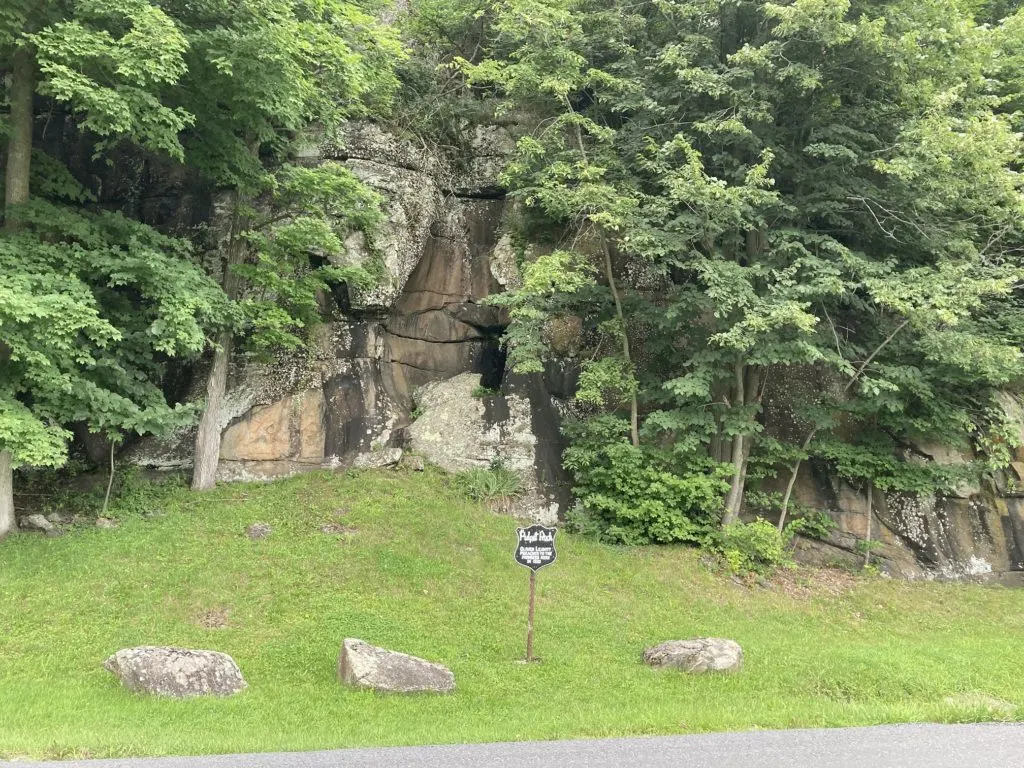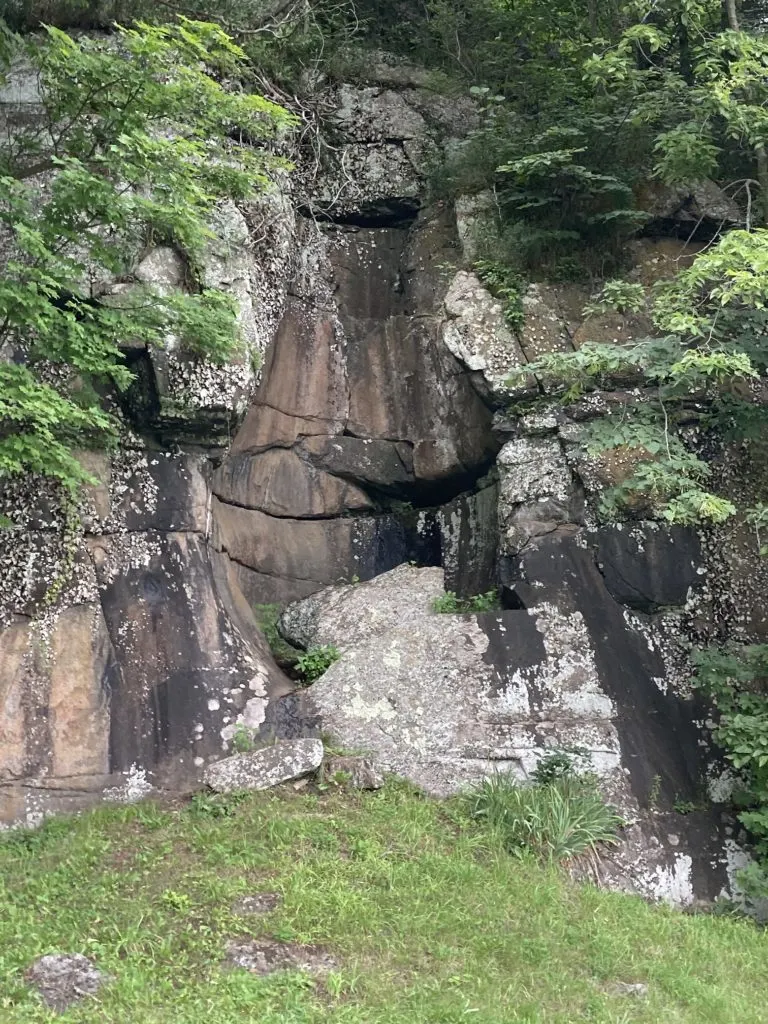Have you ever wondered where the actual Pulpit Rock New York is located? In this post, learn how to find Pulpit Rock, how it got its name, and much more.
The first time that I thought about Pulpit Rock, I was at Payne Lake looking up at the sheer stone cliffs at Pulpit Rock State Forest. It was only logical to wonder if those cliffs were the “pulpit” of the forest, and if they weren’t, exactly how the forest got its name.

And, if those cliffs weren’t Pulpit Rock, where was it? The answer was only a couple of miles away from where I was standing.
Is Pulpit Rock in Pulpit Rock State Forest?
No, the actual Pulpit Rock for which Pulpit Rock State Forest is named is not located within the forest. Those beautiful, sheer cliffs that you can see so well from Payne Lake are not Pulpit Rock.
After I learned this, it made a lot of sense. The cliffs really don’t look anything like a pulpit, except for maybe something that a giant would use!
The real Pulpit Rock, the rocks that look like a recognizable pulpit that a minister or preacher would use, are very close to the Pulpit Rock State Forest. The forest is named after this unique form
Where is Pulpit Rock New York?
Pulpit Rock is a unique formation of rocks located in Antwerp, New York, near the town of Oxbow. The easiest way to access this Jefferson County historic attraction, if you will, is from County Route 25 in Oxbow, NY.
Can you visit Pulpit Rock?
Yes, you can visit Pulpit Rock in Antwerp, NY. There is a grassy parking area on the side of the road with space for a few cars.
This place is more of a historic place, and not a park. That means that there are no tables, benches, restrooms, or any other amenities.
The rock formation itself may not be safe to explore inside, as safety standards for traveling preachers were probably different back in 1820, so it is best to view it from the outside. There is a great view of it directly from the road or the parking area.

As you can see from the photo above, there is a narrow place to park right along the road. You could walk closer to take photographs.
How to get to Pulpit Rock, Antwerp NY?
It is only a few minutes by car from the center of Oxbow. Turn south onto Pulpit Rock Road right in the middle of Oxbow across from the only gas station in town, and you will find Pulpit Rock to your right after about two miles.
If you are traveling through Theresa, NY, it is just as easy to take County Route 22 to Oxbow, and then turn onto Pulpit Rock Road once you are in the village.
How did Pulpit Rock get its name?
Pulpit Rock received its name because it is a rock formation shaped like a pulpit, just like a minister would use to preach to his congregation. Not only does the rock cluster have the shape of a pulpit, it also appears to have natural acoustics which may have helped a preacher’s voice carry to a crowd.
In the photo below, you can see the back of the rocks have a curved shape. The rocks are also elevated and slightly enclosed.

As far as pulpits go, this one seems to have just about everything Oliver Leavitt, a traveling clergy, likely needed to grow a congregation. It is his name on the small blue sign in from of Pulpit Rock.
While standing there, I could almost imagine a small crowd of people, new to the region, listening to the Reverend. Perhaps there were children, horses, wagons or carriages there, as well, on the same route that is now the paved Pulpit Rock Road.
Who was Oliver Leavitt?
Oliver Leavitt was known as a traveling clergy. During the early 1800’s, Jefferson County, New York was very sparsely populated, and religious leaders during this period of American history often traveled to bring the message of their faith to people who would otherwise not have access.
It was common for congregations in the more populated New England states to send out missionaries to some of the areas newly-settled by European-Americans. Oliver Leavitt was one of the earliest missionaries of Jefferson County, New York.
Leavitt performed Presbyterian baptisms in Mexico, New York in as early as 1813, and helped establish the First Congregational Church of Ellisburgh, NY in 1817.
The 1820 US Federal Census shows Rev. Leavitt living in Richland, Oswego County, NY, not far from Mexico with a household of nine people. We can only imagine how difficult the trip on horseback must have been from Richland to Antwerp, an almost 70 mile one-way trip.
Oliver may have been born in Vermont, son of Joseph Leavitt. It is unclear whether he is a relation of the infamous Jonathon Leavitt, also a minister.
Conclusion
Exploring the local history of a place that you visit is often fascinating. You never know what kind of information you will find, and I hope this little tidbit of Jefferson County history was interesting to you.
If you find yourself exploring Antwerp, Theresa, or Oxbow, I highly recommend taking a few minutes to look at Pulpit Rock. It won’t take much time at all, but it really is like looking back in history.
If you get a chance to visit Pulpit Rock, definitely leave a comment below and let me know that you did!
